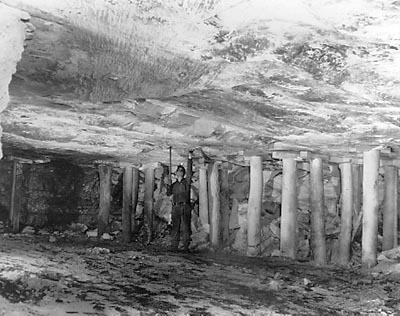My First Night In the Mines
By Buddy French
I guess because of my heritage, I was always fascinated by the coal mines. Even as a young boy I played near them. Many times I heard miners say, "Coal mining gets into your blood," or "Once a coal miner, always a coal miner."
I know now that only by experience can one really understand what that means. On the surface, there is certainly nothing appealing or attractive about working in a coal mine for it is one of the hardest, dirtiest, and most dangerous jobs in the country. One must go deeper – no pun intended – to discover the real draw or lure that keeps a man in the mines.
The following story is an actual account of my first night on the job at Gary No.9. There may be many things about the second night or second week I do not remember, but the images in my memory of that first night will never be forgotten.

United States Steel's Gary mining complex in McDowell County consisted of a large group of coal camps, each one identified by its mine number. They stretched along several miles of railroad branch lines radiating out from the main operation at Gary. These now-small coal camps have names like Alpheus, Thorpe, Elbert, Wilco, and Venus in addition to their mine numbers. The No.9 operation was located at Filbert. These were considered model coal mining communities at the time and the mines here were said to be some of the safest in the industry.
After parking my car, I reached into the back seat for my hard hat, dinner bucket, and miner's belt. Attached to the belt was a self-rescuer – a device to breathe through for up to 30 minutes in case there was a fire and you were trapped in smoke. The belt also had a place to attach the large wet cell battery for the lamp mounted on your hard hat. I was given a round brass tag about the size of a half dollar, with the number 49 stamped on it. This was my check number and I had been instructed to attach it to my miner's belt with rivets and was soon to find out the chilling reason why.